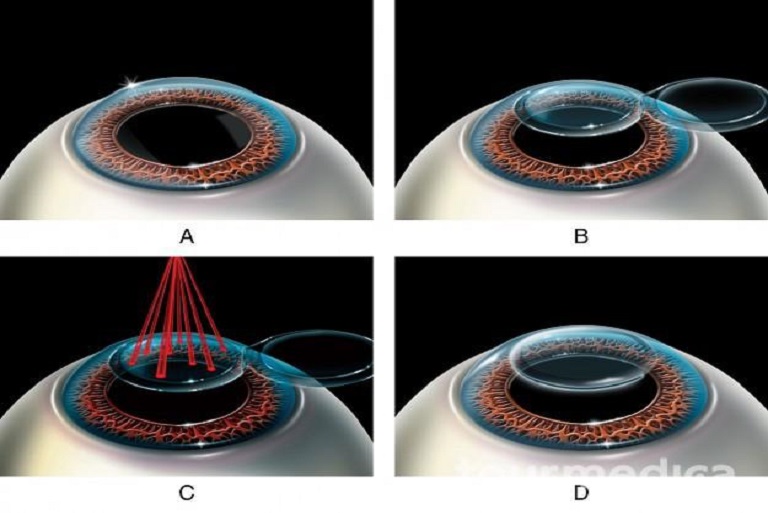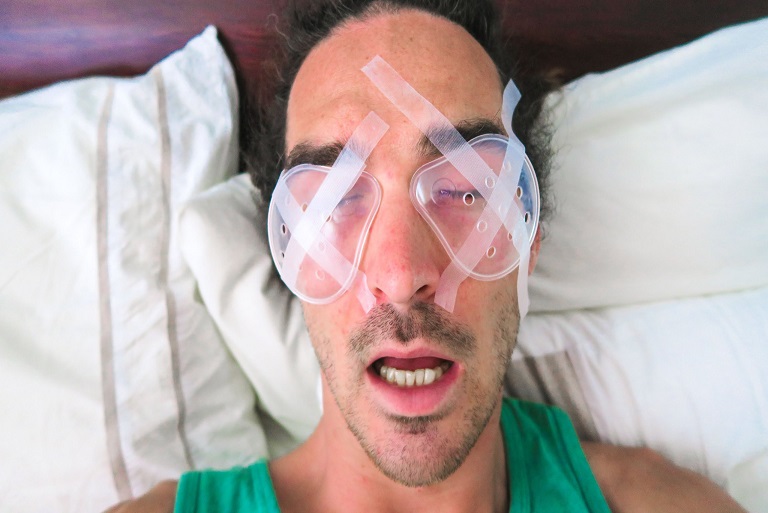Overview
ToggleLaser Correction of Poor Vision
What’s Laser Correction Surgery?
Laser Correction of Poor Vision, or Laser eye surgery, involves using lasers to reshape the front surface (cornea) of your eyes so that you can focus better. It can correct short-sightedness, long-sightedness and astigmatism.
Type of Laser correction surgery:
1. LASIK
LASIK eye surgery is the most common prototype of laser refractive surgery to correct vision disorders. Laser-assisted in situ keratomileusis (LASIK) is an alternative to glasses or contact lenses.
During LASIK surgery, a special beam of cutting laser is used to precisely change the shape of the dome-shaped clear tissue at the anterior chamber of your eye (cornea) to improve vision.
In eyes with normal vision, the cornea bends (refracts) light precisely onto the retina at the back of the eye. But with nearsightedness (myopia), farsightedness (hyperopia) or astigmatism, the light is bent erroneously, resulting in blurred vision.

2. PRK
A photorefractive keratectomy is performed to treat refractive errors in your eyes. This procedure improves focusing of the rays on retina by utilizing laser to reshape the cornea. You may need PRK if you’ve been diagnosed to suffer the following eye issues: Myopia (nearsightedness).
3. LASEK
This procedure is a variant of PRK. The doctor will create a flap where epithelial cells are loosened by applying alcohol solution. Then, laser reshapes the cornea and the flap is set and secured with a soft contact lens so that it can heal around the correction. LASEK treats nearsightedness, farsightedness, and astigmatism.
Other type of Laser correction of poor sight surgery:
ALK (automated lamellar keratoplasty), RLE (refractive lens exchange), EpiLasik, PRELEX (presbyopic lens exchange), Intacs, Phakic Intraocular Lens Implants and AK (astigmatic keratonomy)
But, in this article our focus on most popular laser eye correction surgery (PRK,LASIK,LASEK)

Femto Smile Lasik :
SMILE is an acronym that stands for small incision lenticule extraction. SMILE procedure is the latest version of refractive laser eye surgery, and it involves making a very tiny incision at the edge of the cornea using a femtosecond laser, and then redesigning the cornea by adjusting corneal shape at different regions, according to the specified measurements and corneal topography. In the SMILE technique only femtosecond lasers are used. Femtosecond lasers are characterizied by their ability to pass through the surface of the cornea without doing any harm as it can only affect the sub-surface corneal tissue and alter the shape of the cornea by cutting a small lenticular-shape bit of tissue. The surgeon removes this cut lenticular-shaped corneal tissue through the previously made small incision at the edge of the cornea.
As with LASIK and Femto-LASIK procedures, SMILE is considered a minor operation, which does not require general anesthesia or admission to hospital and is performed under a local anesthetic.
After having done with the procedure uneventfully, the patient can be sent home, and their physician usually prescribes some medications and eye drops for them, which include an antibiotic and pain reliever, and/or anti-inflammatory drug.
After patients are discharged, they are followed up in the clinic, and a periodical examination is performed to ensure that there are no complications.
Laser Correction of Poor Vision Cost:
Laser correction Surgery price usually costs between $ 500 and $ 2000 .
Risks of Eye Laser Correction
- Dry eyes. LASIK surgery causes a temporary decrease in tear production
- Glare, halos and double vision
- Under corrections
- Overcorrections
- Astigmatism
- Flap problems : The following issues may arise if patients experience a flap complication after they undergo LASIK surgery. Keratectasia (Keratoconus) – The outward bulging of the eye due to the weakening of part of the cornea. Epithelial Ingrowth – When cells from the outer portion of the epithelium grow on the inside of the epithelium.
- Regression: Most Lasik and Bladeless Lasik patients experience regression within the first few weeks after surgery, while the surface ablation techniques of PRK, LASEK, and Epi-Lasik may require additional time until regression has settled down. For myopic patients, regression usually occurs within the first one to three months after surgery.
- Vision loss or change
- Retinal rupture
* Retinal imaging is highly recommended before surgery
Before, During and After Laser Surgery:
Before
undergoing laser surgery, you will first meet with Your Ophthalmologist, who will explain what to expect during and after surgery and answer any of your questions.
During your consultation, your doctor’s will need to determine that you are a good candidate for laser eye surgery by reviewing your medical history and assessing your eyes. your doctor’s start by mapping out your treatment by measuring your corneal thickness, mapping the cornea, checking eye pressure, and testing refraction.
If you wear any contact lenses, you will need to take a break from wearing them before your evaluation.
During PRK, an eye surgeon uses a laser to reshape your cornea. This laser, which delivers a pulsing beam of ultraviolet light, is used on the surface of the cornea, not underneath a corneal flap as in LASIK & LASIK has a shorter recovery period and less pain after the procedure.
After
Immediately after surgery, your eye might itch, feel gritty, burn and be watery. You’ll probably have blurred vision. You generally will experience little pain, and you’ll usually recover your vision quickly.
You might be given pain medication or eyedrops to keep you comfortable for several hours after the procedure. Your eye doctor might also ask you to wear a shield over your eye at night until your eye heals.
You’ll be able to see after surgery, but your vision won’t be clear right away. It takes about two to three months after your surgery before your eye heals and your vision stabilizes. Your chances for improved vision are based, in part, on how good your vision was before surgery.
You’ll have a follow-up appointment with your eye doctor one to two days after surgery. He or she will see how your eye is healing and check for any complications. Plan for other follow-up appointments during the first six months after surgery as your doctor recommends.
It might be a few weeks before you can start to use cosmetics around your eyes again. You might also have to wait several weeks before resuming strenuous contact sports, swimming or using hot tubs.
Follow your doctor’s recommendations about how soon you can resume your normal activities.
Laser Correction of Poor Vision Recovery time:
Most eye surgeries will involve anesthesia in the form of drops to numb the eyes and oral sedation for the patient to relax. Thus, it may take some time for the anesthesia to wear away. The benefits outweigh the side effects. Yet, a patient must expect that a laser eye surgery recovery may last for more than a week.

Smart Behan is the main platform to provide medical information to address your health issue. Our network introduces best hospital and centers in iran offering high quality services and expert Best Doctors and Surgeons in Iran as well as booking appointment. You can manage your medical travel. Smart Behan accompanies you from airport to airport handling Welcoming, transportation, translation, medical treatment and last not the least follow up when you are back to home.
Smart Behan can also make an appointment with our Ophthalmic Surgeon, Dr. Seyed Hamidreza Jahadi Hosseini for your consultation and surgery.
To view the rest of our training posts, you can click here


Leave Your Comment